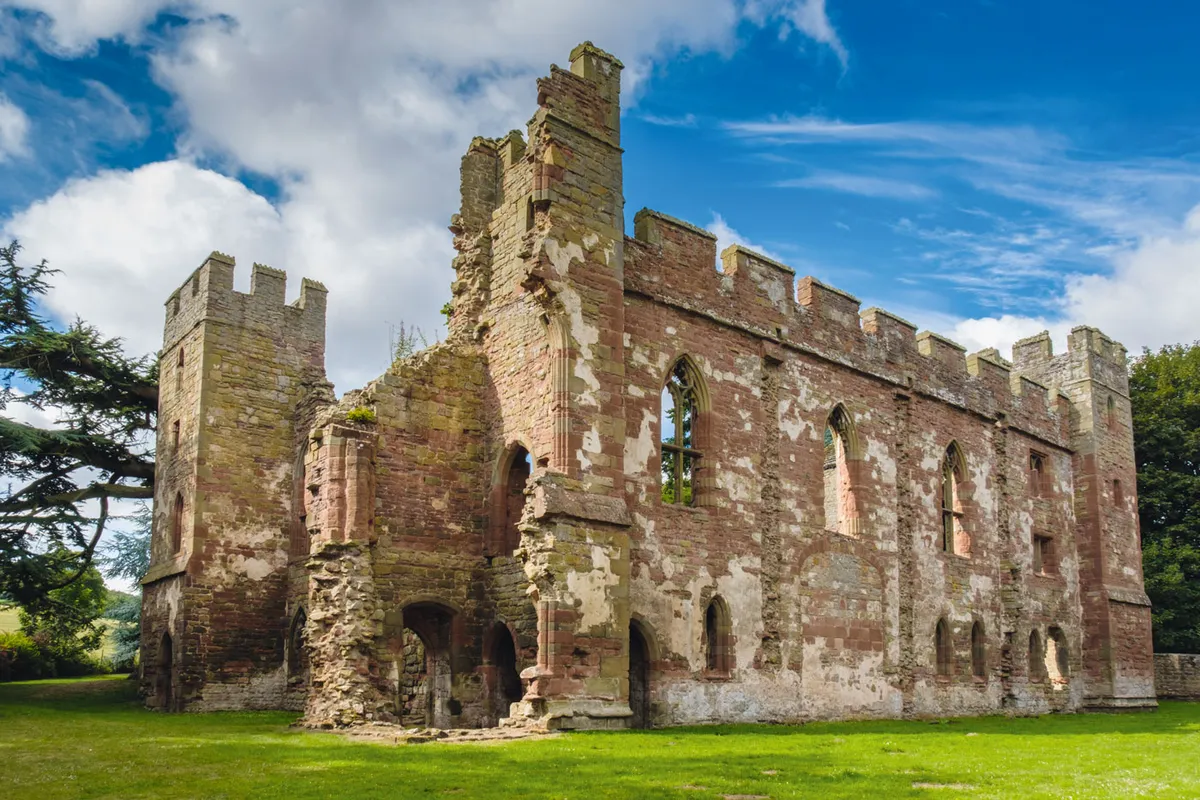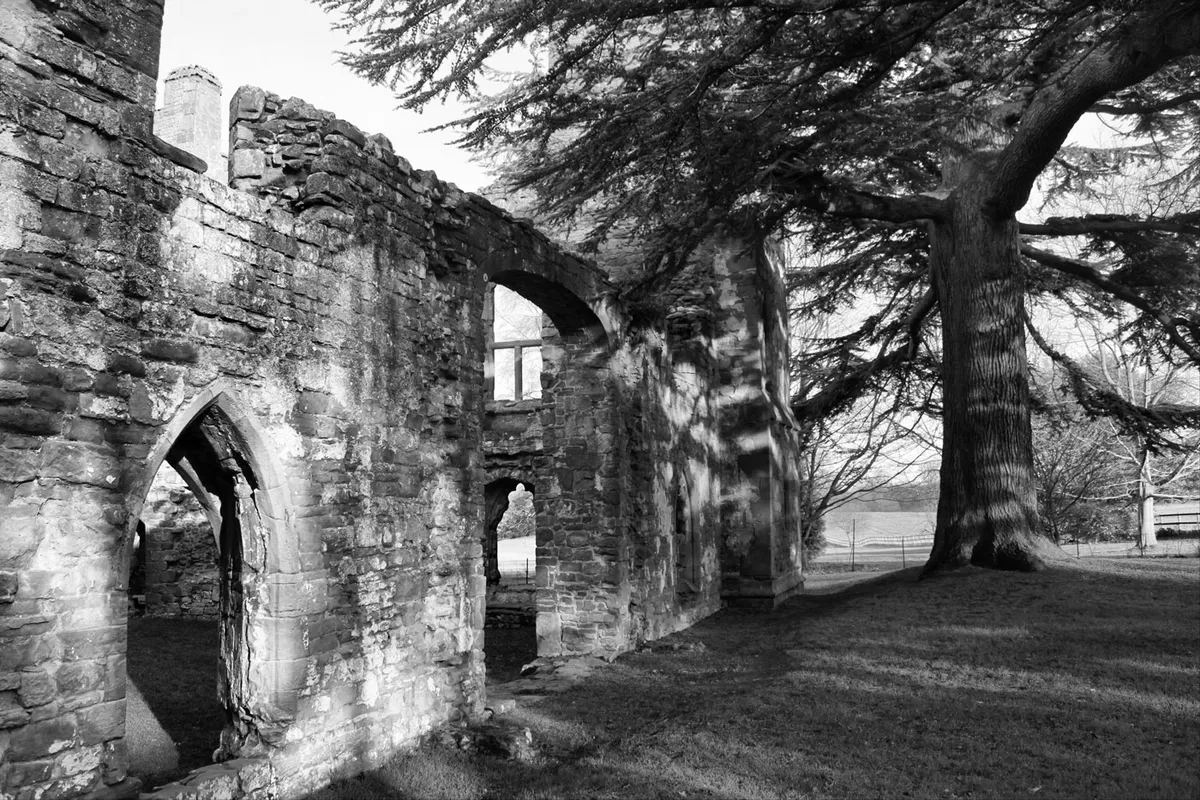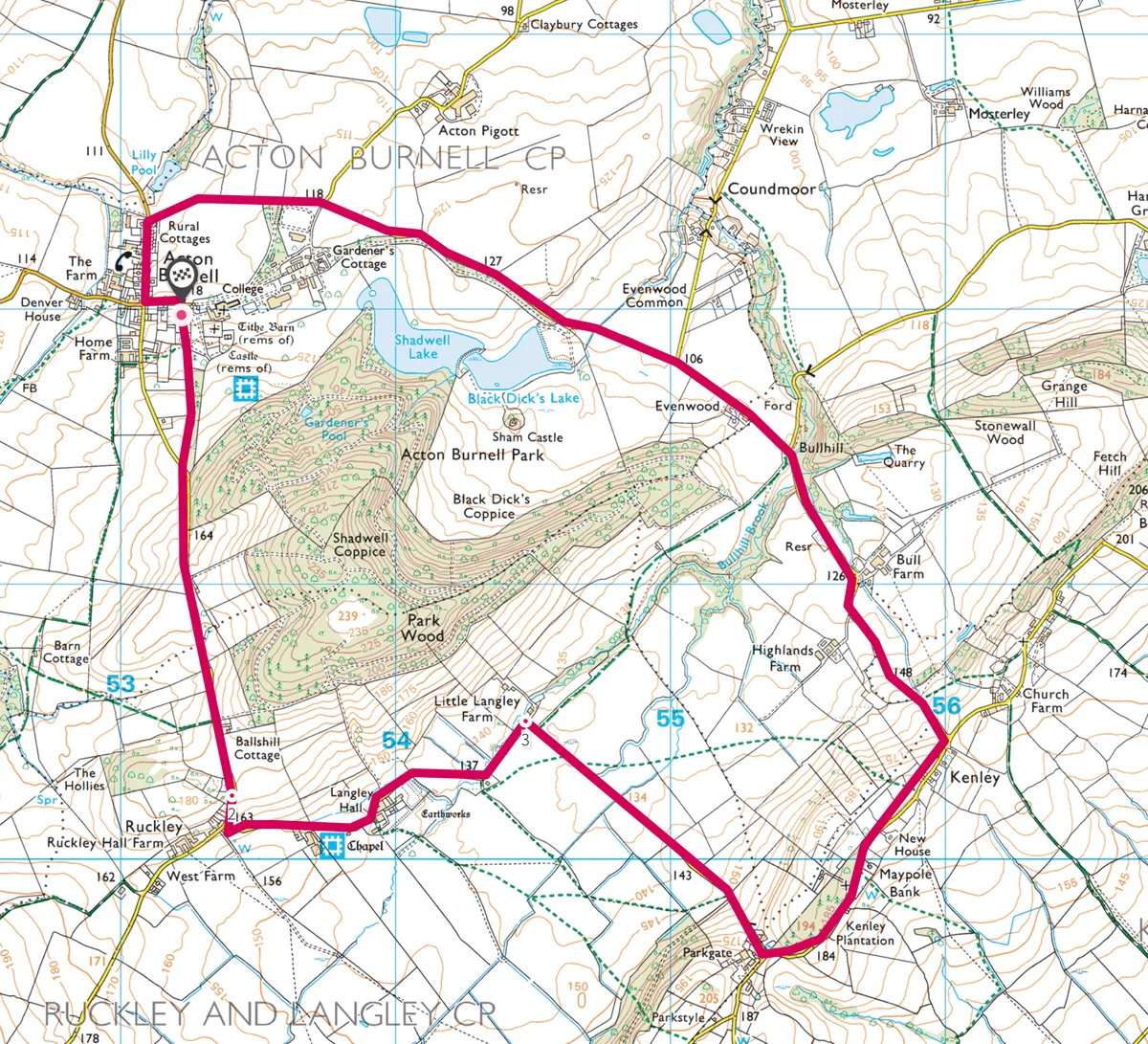The quiet hamlet of Acton Burnell, tucked deep into the heart of the Shropshire countryside, holds two hidden havens, both so discreet that even many Salopians are not aware of their existence.
Secreted behind St Mary’s Church is an eerie thicket of rhododendron and yew. A mysterious path tunnels through this, as if stepping back through time, emerging suddenly into a formal landscape of structured serenity. The ruins of 13th-century Acton Burnell Castle sit on manicured lawns like a sandstone statue of solitude.
Walk through a dark woodland in rural Shropshire and discover a hidden world of historic parliaments and a long-abandoned church on this six-mile circular walk.

Arrive early enough on a frosty October morning, and visitors will glimpse rabbits and fallow deer in the nearby park. A thick cedar provides the perfect backrest against which to lean and contemplate the castle’s past, as the cawing of crows and jackdaws rings down from its canopy.
1
Laying Foundations
In 1272, when Edward I of England became king, he made his most trusted servant, Robert Burnell, Lord Chancellor. Edward’s constant warring with the Welsh meant he was a frequent visitor at Robert’s Acton Burnell property. So frequent, in fact, that in 1283 King Edward held a parliament here, believed to be the first in the country with commoners in attendance.

In the adjacent school grounds are two ruined gables, once part of the tithe barn where the ceremony took place.
2
Forgotten Chapel
A path opposite St Mary’s Church cuts through the low-crowned trees to a quiet, single-track road to Ruckley, off which stems a minor lane to Langley Chapel. Sat in the middle of a field, this hidden gem has an air of desertion about it. Once a bustling rural community, the villagers abandoned the 14th-century church and its rare 17th-century timber furnishings in 1871 for better-paid work in nearby Coalbrookedale.
Behind its heavily studded wooden door is a spartan, Tudor-decorated interior, where the grooves and carvings of the pews collect the dust of history. In the early 20th century, this silent and serene structure became one of the first buildings to be saved by the state, for the nation.

3
Robert's refuge
Follow these quiet lanes for about six miles around Acton Burnell and Park Wood, once Robert Burnell’s Shropshire refuge from the pressures of life as England’s Lord Chancellor.
Map
Click on the map below for an interactive version of the route.

For more information about the area, go to the Shropshire Tourism website.
